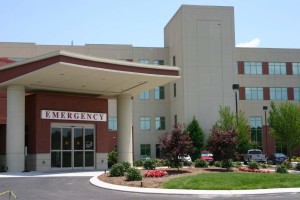More than one-third of Georgia hospitals scored an “A’’ in the latest safety ratings by the Leapfrog Group.
That puts Georgia No. 15 among states for its percentage of hospitals getting an “A’’ from Leapfrog, up from 17th place in the ratings last fall.

Leapfrog, a patient safety organization founded by employers, issues the rankings semi-annually, in fall and spring. It’s a widely watched rating system, and it’s touted especially by hospitals that do well in the grades.
Georgia’s 27 “A” hospitals were a combination of urban and suburban hospitals and smaller rural facilities. Piedmont Healthcare had seven of its hospitals earning an “A.’’
“We are proud of our record on quality, which our talented employees have worked hard to attain,” said Kevin Brown, president and CEO of Piedmont, a large Atlanta-based system. “Quality, safety and service lie at the heart of Piedmont’s strategic vision of providing high-quality, patient-centered care and it is great to see us delivering on that.”

Large systems Emory, WellStar, Northside and HCA also had at least two hospitals with top safety grades. (Here’s a link to the Georgia grades.)
AdventHealth Gordon in Calhoun (formerly known as Gordon Hospital) continued its perfect record of getting an “A” in every ranking since Leapfrog started the safety report in 2012.
No hospital in Georgia received an “F’’ this time around.
The scores are calculated by experts on patient safety. The Leapfrog Hospital Safety Grade uses national measures from the federal Centers for Medicare & Medicaid Services, the Leapfrog Hospital Survey, and other supplemental data sources. The letter grade, summarizing 28 measures, reflects a hospital’s overall performance in keeping patients safe from preventable harm and medical errors.
The top five states, with the highest percentages of “A” hospitals, were: Oregon (58%), Virginia (53%), Maine (50%), Massachusetts (48%), and Utah (48%)
The Leapfrog goal is to encourage consumers to consider safety when selecting a hospital. The group also says it believes the grade will foster strong market incentives for hospitals to make safety a priority.
Berneta Haynes of Georgia Watch, a consumer advocacy group that’s a regional leader for Leapfrog, said Wednesday, “We congratulate Georgia’s ‘A’ hospitals for setting an example for the entire state and encourage all hospitals to make patient safety a top priority. The Leapfrog Hospital Safety Grades offer crucial information to help Georgia consumers make informed decisions about their health care.
“We appreciate the hospitals that voluntarily participate every year in the Leapfrog Hospital Survey to provide information about their safety practices and outcomes to consumers.”


The Leapfrog Group contracted with the Johns Hopkins Armstrong Institute for Patient Safety and Quality to update its estimate of deaths due to errors, accidents, injuries and infections that occur in hospitals. Researchers reviewed more than 2,600 hospitals receiving safety grades and found that when compared to “A” hospitals:
** Patients at “D” and “F” hospitals face a 92% greater risk of avoidable death
**Patients at “C” hospitals on average face an 88% greater risk of avoidable death
** Patients at “B” hospitals on average face a 35% greater risk of avoidable death
Even “A” hospitals are not perfectly safe, but researchers found they are getting safer, Leapfrog said.
If all hospitals had an avoidable death rate equivalent to “A” hospitals, 50,000 lives would have been saved in the latest reporting period, versus 33,000 lives that would have been saved by “A” level performance in 2016, Leapfrog said.
Overall, an estimated 160,000 lives are lost annually from the avoidable medical errors that are accounted for in the Hospital Safety Grade, a significant improvement from 2016, when researchers estimated 205,000 avoidable deaths.
“The good news is that tens of thousands of lives have been saved because of progress on patient safety. The bad news is that there’s still a lot of needless death and harm in American hospitals,” Leah Binder, president and CEO of the Leapfrog Group, said in a statement. “Hospitals don’t all have the same track record, so it really matters which hospital people choose, which is the purpose of our Hospital Safety Grade.”

Leapfrog says it’s the only national hospital rating that focuses just on errors, accidents, injuries and infections.
Erin Stewart, a Georgia Hospital Association spokeswoman, said Wednesday that the Leapfrog report underscores hospitals’ commitment to improving patient quality and safety.
“Georgia hospitals are always working to improve hospital safety to ensure the highest-quality patient care,” Stewart said. “We are pleased to see these efforts reflected in the recently released scores, with 35.5 percent of hospitals receiving an ‘A’ grade and meeting the highest safety standards. Additionally, 21 percent have an improved score from the previous report, underscoring their ongoing commitment to improvement.
“Hospitals are leaders in transparency with regard to quality measurement and have shared safety and quality data with the public for more than a decade. When making health care decisions, patients should use all available tools at their disposal such as consulting with doctors, nurses and other health care providers and talking with friends and family.”

